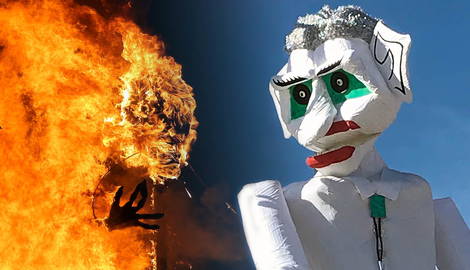
Have you felt burdened by the difficulties of the past year? In Santa Fe, New Mexico, there is a unique tradition that allows people to let go of their worries: they set fire to an enormous effigy known as Zozobra—Spanish for “anxiety.” Crowds come together every year to watch Zozobra burn. A spectacle said to represent the end of despair and the start of something more positive. But what gives this act its power? Why do human beings find solace in symbols? Let’s take a closer look at things.
The History and Symbolism of Zozobra
Zozobra burning in 2005. Source: Wikimedia Commons
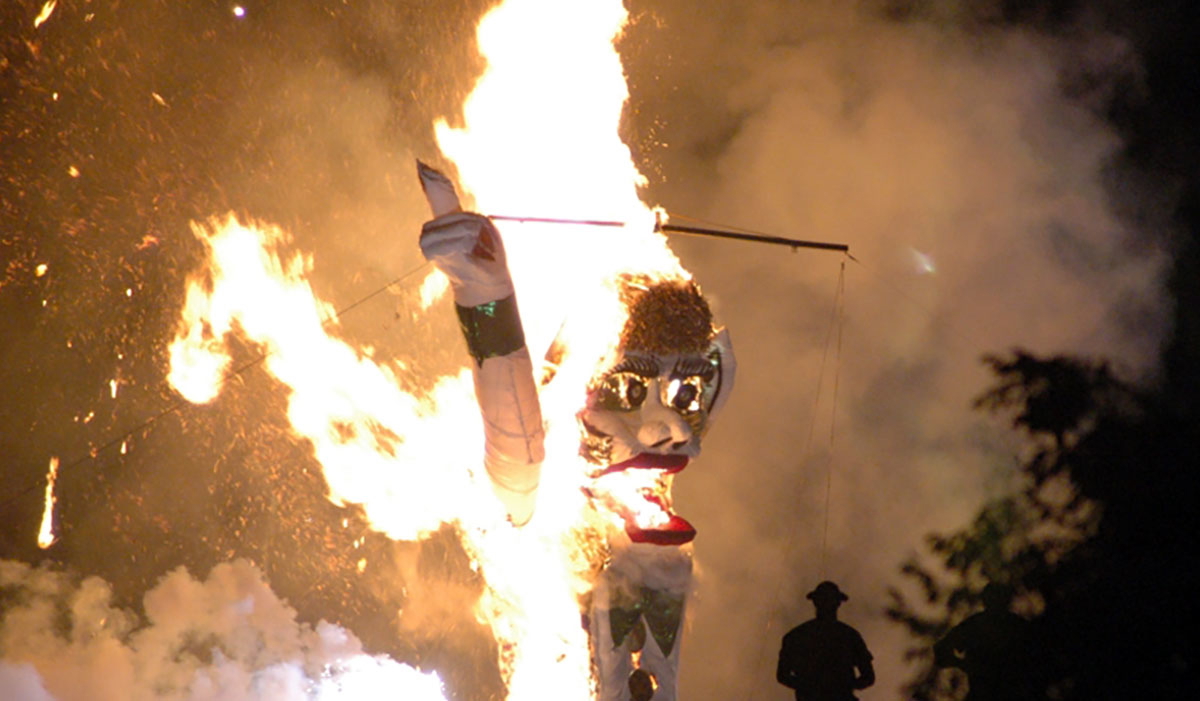
Zozobra is burned every year in Santa Fe by local people wanting to get rid of negative feelings they have built up over the previous year. It is made to look like a very large puppet—more than 50 feet tall sometimes—with an expressive face that looks sad and worried.
When Zozobra burns, there is a big party with fire and music. This ritual gives everyone there a chance to start again with a clean slate: it is like one big group therapy session.
When individuals project their own fears and hardships onto Zozobra, the communal result is a cathartic event—they feel released and relieved from their own troubles as they watch the effigy burn. It is almost as if there is magic in the flames that turns these worries to ash, leaving behind only a sense of renewal.
At a more abstract level, the burning of Zozobra taps into deep ideas about change and regeneration. Like the mythical bird phoenix, which rises out of its own cinders, this ritual shows destruction does not have to be final.
Instead, it can make way for something new to begin; out of despair comes hope. This annual bonfire suggests everybody can start afresh.
The Philosophy of Catharsis: Purging Emotions Through Symbolic Acts
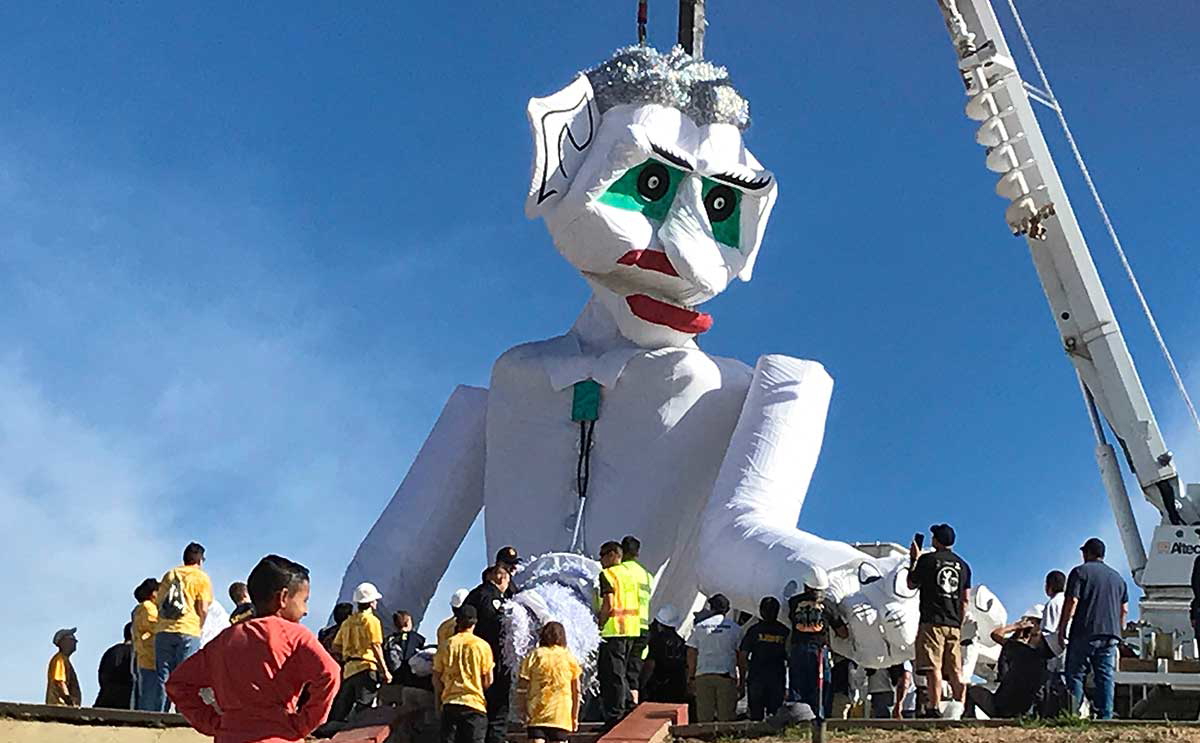
Aristotle created the idea of catharsis more than two millennia ago. It’s a theory about human emotions and how we need to experience them. But also sometimes get rid of them.
He thought that if someone saw a play that made them really sad or scared (or both), then they would feel better afterward. The play had a certain effect—it let those feelings out in a safe way, so afterward, there were fewer inside me anyway.
This idea has had a big influence on what we think art should do for us over time, as well as on rituals like going to funerals (where being sad helps people grieve) or even just talking with friends when feeling down.
Zozobra is an event that brings this ancient idea to life. When it burns each year, it isn’t only a show; everyone in the community can participate in one big cathartic experience together.
When individuals impose their fears and sadness on Zozobra, they effectively pass off what burdens them. This allows the effigy to bear the weight—quite literally—when it goes up in flames. In coming together for this annual ritual, people find a safe way to rid themselves of negativity. And it works.
There is solid psychological reasoning here, backed up by research into rituals that help us cope with difficult feelings. For example, writing down your worries and then putting the piece of paper through the shredder can really feel like a weight is being lifted.
Zozobra is a very big version of these exercises—a 50-foot-high one, in fact. Although its roots are in ancient wisdom, you could also see it as a therapy aid, especially useful for anyone keen on blending tradition with current healthcare insights.
Collective Rituals and the Human Need for Symbolic Expression
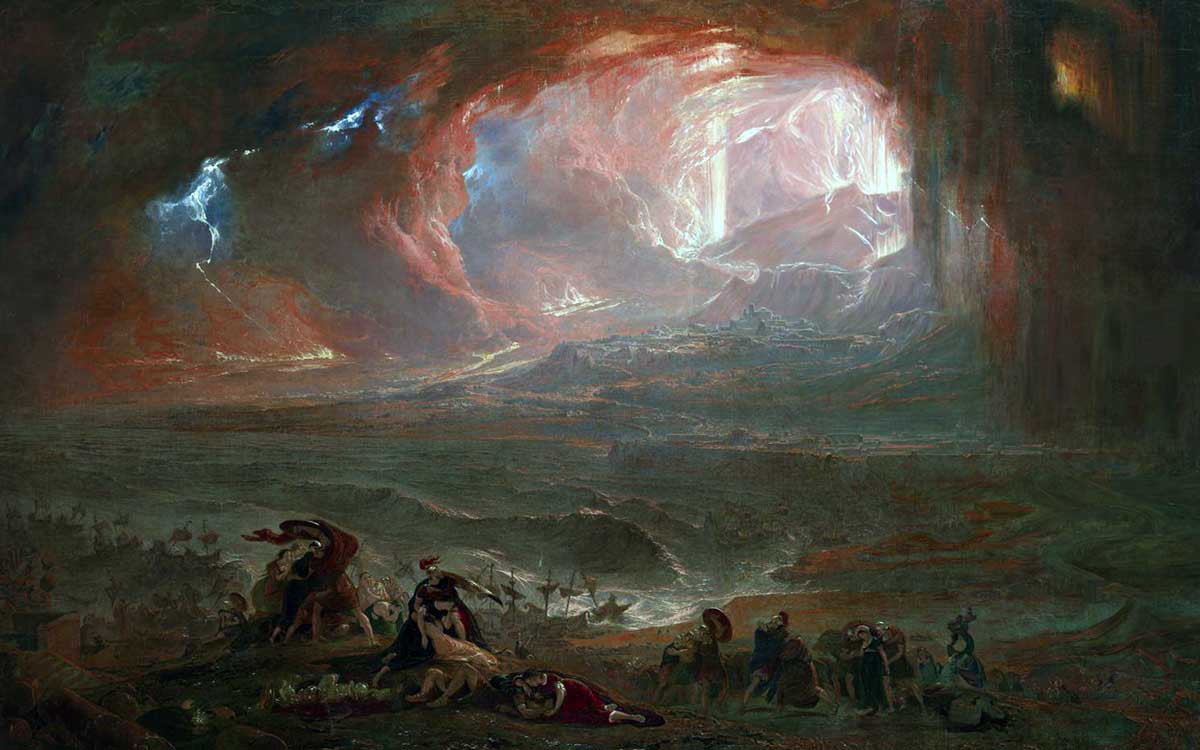
Rituals play a big role in societies everywhere, helping to bring people together around shared beliefs and practices. This could mean anything from religious ceremonies to national holidays: events that give individuals a chance to celebrate things they have in common with others or mark important moments in time.
When we take part in these activities, we feel like we belong to something greater than ourselves—and also get a sense of who we are. Because everybody needs ways to show feelings symbolically, rituals such as these enable them to find collective ways to be happy (or sad), honor the dead, and give themselves a new life.
The burning of Zozobra each year provides a good example of this urge for group expression. It isn’t just an occasion but also a social ritual that helps weld the community of Santa Fe into one whole unit.
When individuals come together to observe their fears and worries being set alight, they take part in an intense communal event that enables them to release the past and look toward the future. Such acts help to forge stronger connections between people, illustrating that nobody is battling life’s challenges alone.
In underlining the importance of shared ceremonial practices for strengthening group identity, French sociologist Émile Durkheim pointed to their role in creating what he termed “collective consciousness.”
Zozobra vividly illustrates this idea. It demonstrates how such rituals can build social bonds and give participants feelings of joint purpose and meaning.
Symbolism and the Transformative Power of Fire

Fire has long symbolized a doubling into opposites. It is the cause of both desolation and resurrection, the consuming agent that prepares the ground for regeneration.
Thus, in Greek myth, the Phoenix was consumed in fire before rising again from its ashes—a potent symbol of restoration. Heraclitus, an ancient Greek philosopher, viewed fire as an integral part of change, stating that “Everything flows,” and change constitutes the very substance of life.
Burning effigies like Zozobra is a form of primal symbolism. By setting alight what represents our fear, anger, or regrets, we allow for a transformative release.
It’s as if, in watching the flames, we’re burning away our inner burdens along with the effigy. The ritual then easily turns what is essentially destruction into an act of purification paradoxically. So something echoed as far back as Buddhist philosophy, in which “letting go” of attachment means letting growth begin.
The symbolic burning is a metaphor for larger philosophical themes of renewal. Whereby forests depend on fire to burn away old growth and make a path for new life, so too sometimes do we need some powerful release to forge ahead. In these flames, we see the end and a promise of new life.
The Destruction of the Old as a Path to Renewal

Philosophers often return to the idea that you need to break something down in order to build it back up—think of Nietzsche’s term “creative destruction.” This belief suggests it’s necessary to demolish old ways of doing things if society is going to move forward and grow.
This view implies that rather than being afraid of endings, we should welcome them as a chance for something better to begin. The same thought lies behind an event like the burning of Zozobra: once-a-year festival-goers symbolically destroy all their worries from the past 12 months.
Of course, watching an enormous figure go up in flames is spectacular—but there’s more to it than that. In addition to enjoying themselves, people can feel they are getting rid of bad stuff that has been weighing them down. If they take part every year, participants may start to see life in a more positive way.
Burning away past negativity is also observed in different cultures worldwide. They view fire and destruction as symbols of both purification and regeneration. For example, during the Hindu festival, Holika Dahan celebrates the triumph of good over evil by setting alight a symbolic pyre.
Nevada’s Burning Man festival features the fiery destruction of a huge wooden effigy. This represents liberation from constraining personal demons—something many believe can only be achieved through letting go via some sort of destructive act.
At the core of all these rituals lies deep human faith in the old adage: “Out with the old (even if it seems burnt to a crisp) and in with what’s new, vital, and flourishing.”
Philosophical Reflections on Impermanence and Letting Go
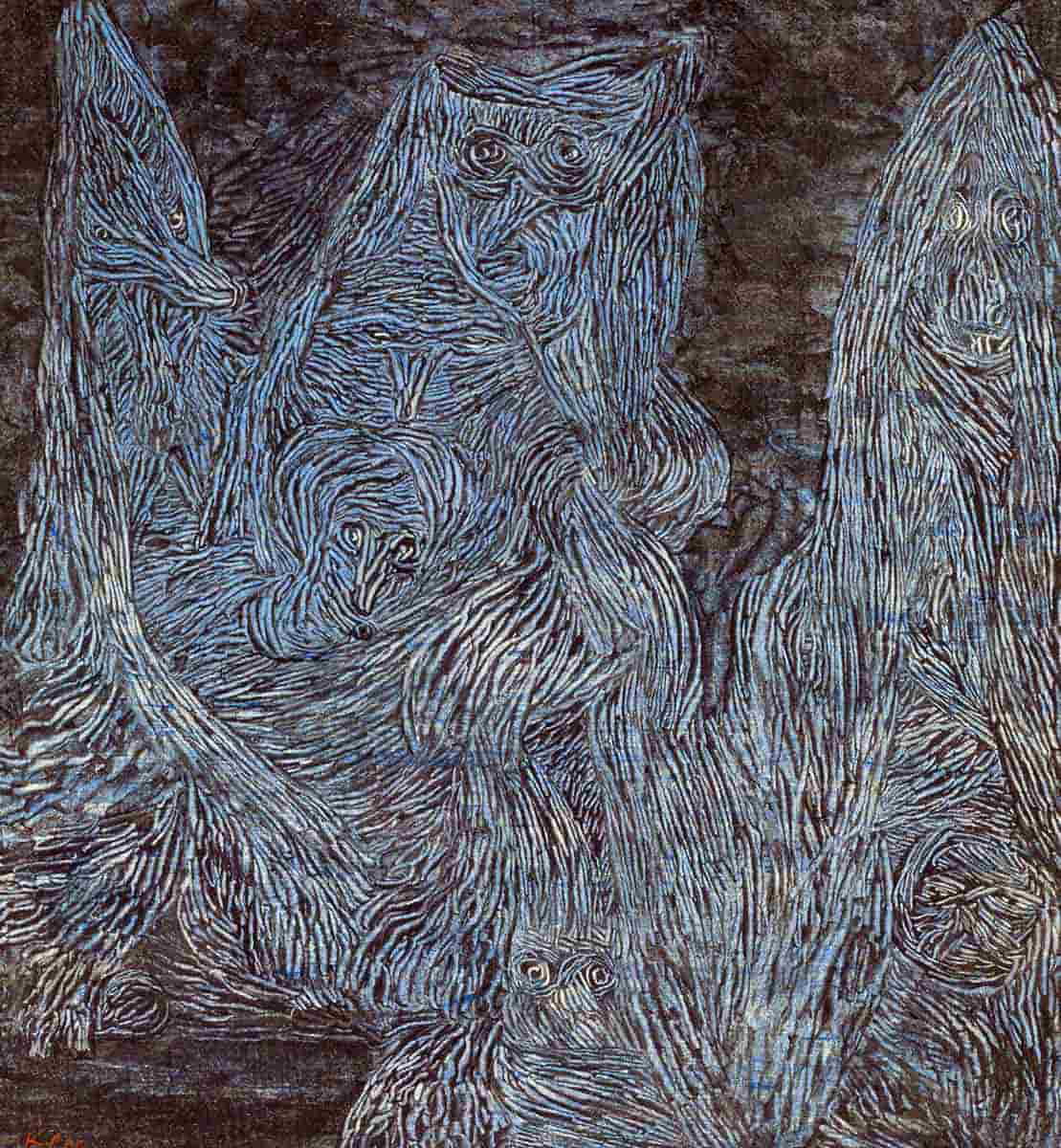
Both Buddhism and Stoicism consider impermanence fundamental because they tell us that nothing in life is permanent. According to Anicca, a key Buddhist idea, we only suffer if we crave things—such as material objects, friends, or feelings—that cannot last. Everything changes with time.
Stoic philosophy also reminds us of this truth through memento mori. Thinking about our own death helps drive home the point and encourages acceptance of whatever life throws at us.
By advocating for acceptance in this way, these ancient wisdom traditions (alongside many others) suggest people can find peace with what is sometimes called “reality” instead of becoming frustrated over how things are always changing—because one day you will, too.
The burning of Zozobra strongly demonstrates these beliefs. When onlookers see the puppet being destroyed by fire, it reminds them that everything—even hardship—comes to an end.
Watching their worries go up in smoke with Zozobra can help people let go of things they can’t change and be open to what follows.
Whether you are considering how unpredictable life can be like a Stoic or thinking about impermanence during meditation like a Buddhist (who believes all things are temporary), this act closely echoes freeing experiences had by both groups.
So, What Is Zozobra?
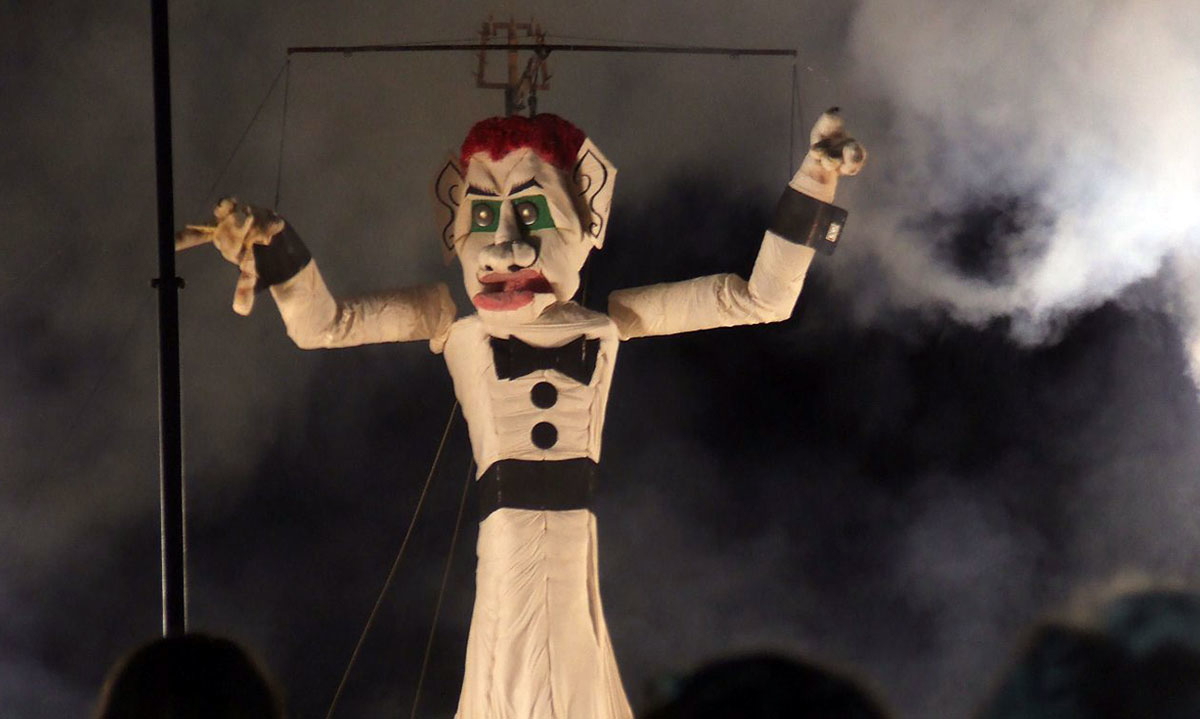
What is Zozobra through a philosophical lens? It’s more than just an enormous marionette that goes up in flames each year in Santa Fe. Zozobra represents our struggles, fears, and annoyances—made visible so we can deal with them head-on and let them go.
This ritual connects with deep philosophical ideas: the catharsis of release, the symbolic destruction that clears the path for something new, and the strength we draw from one another as we share an experience.
Whether we look back to ancient Greece and ideas around catharsis or consider Buddhist and Stoic lessons on impermanence, Zozobra brings out something primal in humanity: a desire for emotional freedom plus transformation.
Seeing it burn reminds us that neither our troubles nor the figure itself will last forever. By embracing this symbolical act of destruction, we are reminded to shed what no longer serves us, embrace change—and meet what lies ahead with open hearts.
In this sense, then, Zozobra is not just a ritual. It’s a practice—an annual one at that—that asks us to think like philosophers: How do we renew ourselves? And how can hope play a part?
